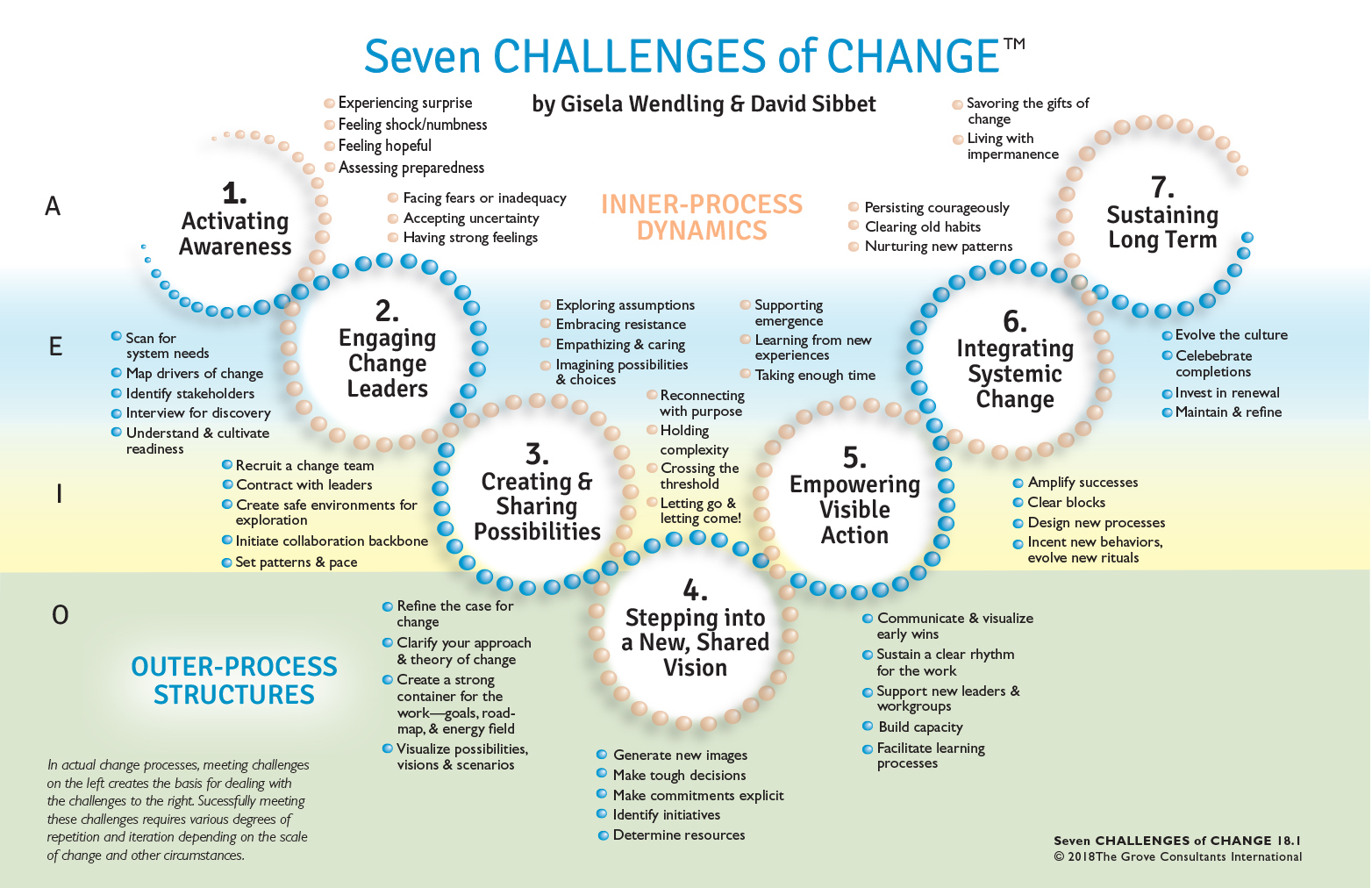Dealing with Permanent In-betweenness
Dec 16, 2021
“In the universe, there are things that are known, and things that are unknown, and in between them, there are doors.”
― William Blake
As we enter the third year of living with the pandemic, it seems that we are in a state of permanent liminality, caught in the space between "what was" and "what will become." Liminal comes from the Latin word limen, meaning threshold, like the sill of a doorway, or the point of entrance to a building. In change work, this point in time is considered a threshold moment. Anthropologist Victor Turner, who wrote extensively about liminality, said that the experience of an extended in-between phase feels more like a tunnel rather than simply stepping across a doorway. We agree. Especially now.
We also confront the unknown, which is a necessary part of real change. We may feel we are in the dark and things may not be recognizable. This is because, in transformative change, we literally enter new and uncharted territory. By embracing this unfamiliarity, we make room for the kind of breakthrough thinking that leads to new levels of innovation. Learning how to design and guide a process container for people to work creatively with these generative tensions is one of the fundamental tasks of change work.
How can we respond both personally and professionally?
Recognize Permanent In-betweenness
Accept the fact that the tensions of permanent in-betweenness (in unpredictable, discontinuous and complex change) can be intense, overwhelming and taxing. It helps to notice all of the aspects of your life that remain stable. We find that taking the time to care for yourself is extremely important.
Galvanize and Focus Your Energy
Identify and work with the challenge that is the most vital to you. Give your change challenge a name to clarify its meaning. It helps to be specific. Otherwise, your focus will be fuzzy and the challenge may feel too complex or ambiguous. Bringing your attention to this key challenge also creates more clarity around the other areas of change you might be confronting.
Shift and Open Up Limiting Patterns
If you are feeling stuck, do something different, something unexpected. We cannot keep doing the same things over and over if we want to have different results. Make a list of things that would take some courage to do, pick a couple, and do them. Move out of your comfort zone.

The Seven Challenges of Change Framework™
To support our organizational clients in working effectively with the complex and emergent nature of change, as we are experiencing right now with the pandemic, we have developed the Seven Challenges of Change framework. This framework shows how a well-designed outer process structure can guide the liminal, emergent and inner process dynamics. If your change situation requires high levels of engagement across organizational levels and functions, this approach will be especially helpful.
The full framework illustrated here provides a comprehensive checklist of what to pay attention to with each of the challenges when designing and leading change.
Download the Seven Challenges of Change™ Framework
Learn to use the Seven Challenges of Change Framework as a guide for designing and leading organizational change in our in-person course, Designing and Leading Change.
Adapted from Sibbet, D., & Wendling, G. (2018). Visual Consulting: Designing and Leading Change. John Wiley& Sons, Inc.
